Billowy clouds of light and fluffy toasted meringue top this sweet & citrusy Lemon Meringue Pie. This old-fashioned, homemade pie uses fresh lemons and zest for the ultimate lemon flavor with just the right amount of cornstarch to thicken it until it's silky smooth and sliceable.
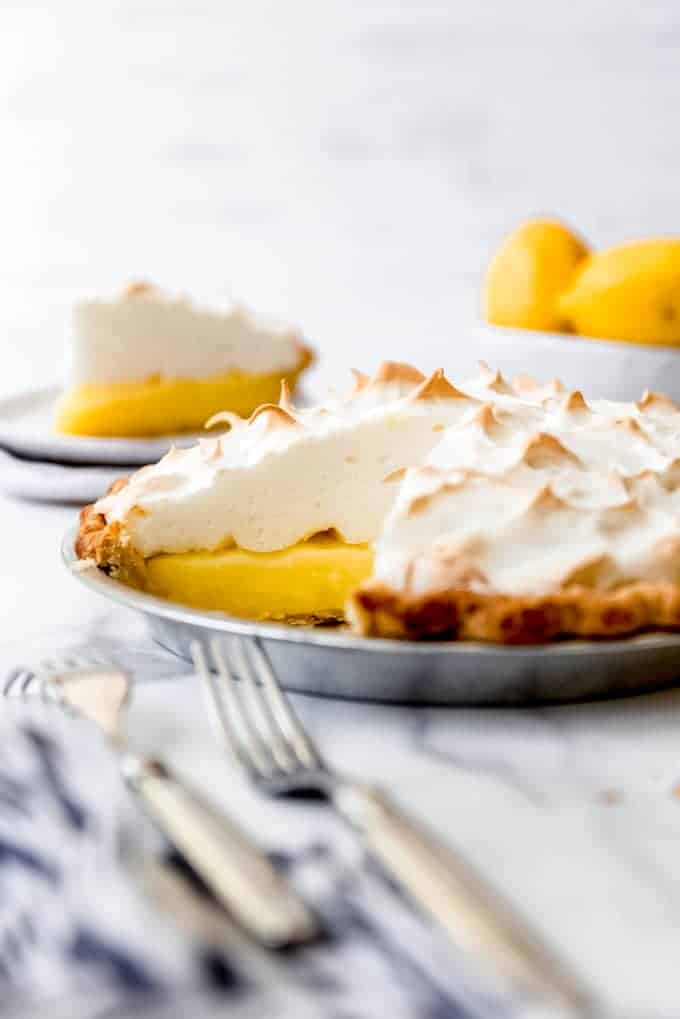
The Best Recipe for Homemade Lemon Meringue Pie
If you have tried every lemon meringue pie recipe in search of the perfect one with the right ratio of meringue to filling, real lemon flavor, and a buttery, flaky crust your search is over. I have made dozens of lemon meringue pies and this one is a keeper!
If you love lemon desserts, be sure to check out our recipes for Lemon Ice Cream, Lemon Cupcakes, Double Lemon Glazed Cookies, and Lemon Macarons.
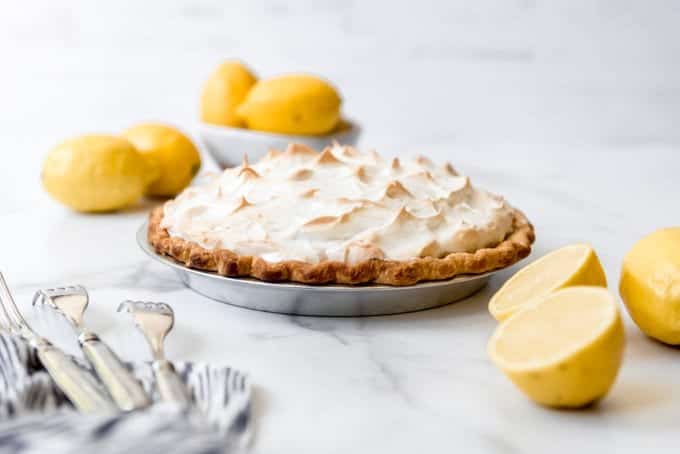
Old Fashioned Lemon Meringue Pie ingredients
- Pie Crust
- Sugar
- Cornstarch
- Salt
- Water
- Lemon Zest & Juice
- Butter
- Eggs
- Cream of Tartar

How to make Homemade Lemon Meringue Pie
- Start by making your pie crust first since it needs to be baked all the way through before filling with the homemade lemon pudding. If you are using a homemade pie crust, roll it out on a floured surface and transfer to a 9-inch pie plate (affiliate link), then trim and crimp the edges.
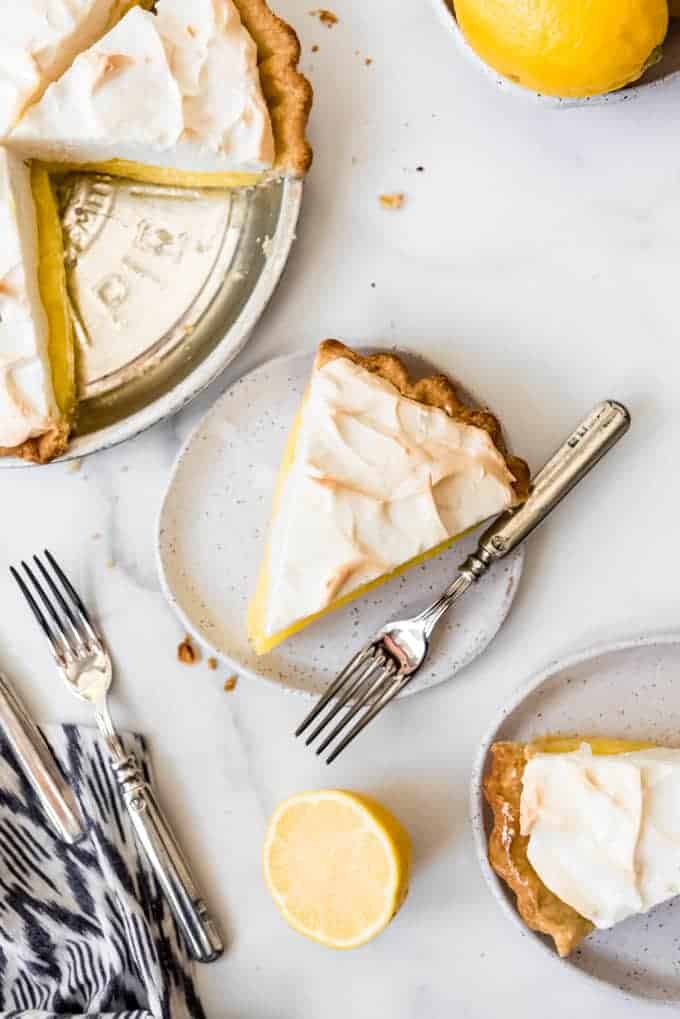
Blind-bake the pie crust
- To blind-bake a pie crust, preheat oven to 400 degrees F. Poke the bottom of the pie crust with the tines of a fork. This will help it not to bubble up and shrink as much while it bakes. The other key to blind-baking a pie crust is to place a piece of parchment paper down into the pie crust and fill it with pie weights. If you don’t have ceramic pie weights, you can also use dried beans, rice, or even just granulated sugar. The weights keep the pie crust from shrinking during the first half of the bake.
- Partway through baking, pull the pie crust out of the oven and carefully lift the parchment paper out, transfer the pie weights, or whatever you used to hold the crust down, to a heatproof bowl. Then return the now empty pie shell to the oven to finish baking all the way, since we want a fully baked pie crust to fill with homemade lemon pie filling. You might need to cover the edges of the crust with a pie guard or a piece of foil to keep it from getting too dark.
- Let the crust cool completely before filling. You can do this step a day in advance. Just wrap the baked pie crust in plastic wrap and let it sit on the counter overnight.
Lemon pie filling
- Make the filling by first separating the egg whites and yolks. Set the whites aside in a large mixing bowl for the meringue later, and transfer the yolks to a medium bowl for use in just a bit. Whisk the cornstarch, one cup sugar, and salt together in a medium saucepan. Add water, ½ cup of freshly squeezed lemon juice (from about 2 lemons usually), and lemon zest, whisking to dissolve the cornstarch and sugar and set over medium-high heat. Cook, stirring frequently, just until this comes to a boil and starts to thicken, then remove from the heat and stir in the butter until melted.
- In a separate bowl, whisk the egg yolks, then pour about ¼ cup of the hot lemon filling into the bowl and whisk well to temper the yolks. This prevents them from cooking too quickly and scrambling when you add them to the filling. Add another ¼ cup and whisk again, then pour the tempered egg yolk mixture back into the saucepan and stir until combined.
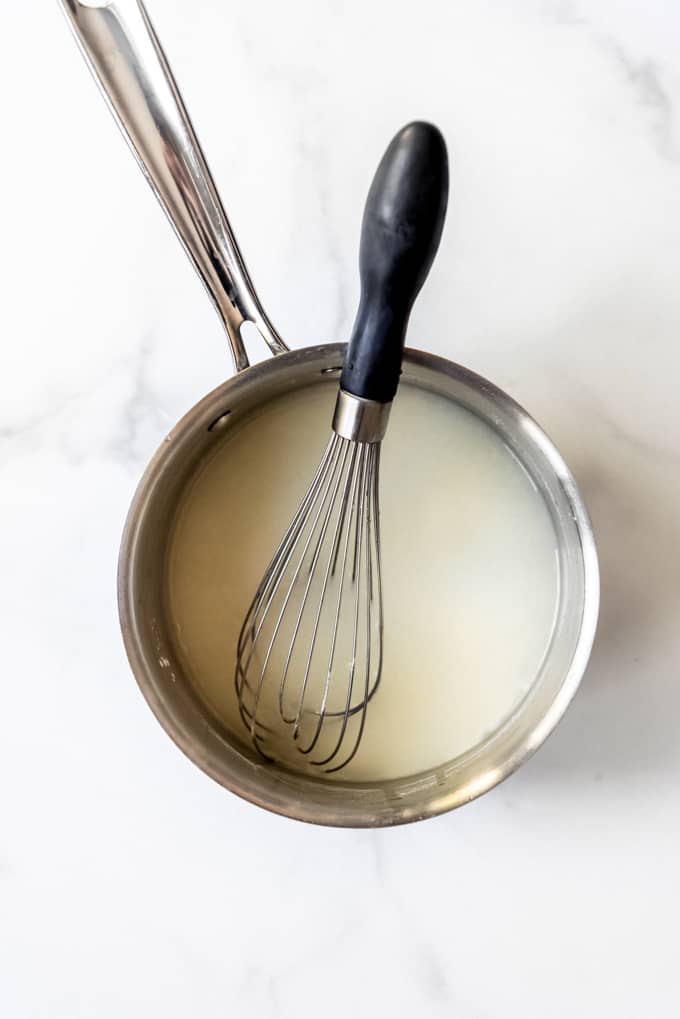

- Bring the filling mixture back to a boil and cook over medium heat, stirring constantly until thickened, which usually only takes another 2-4 minutes. If your filling isn’t thickening up, increase the heat slightly. Pour into the prepared, fully-baked pie shell.
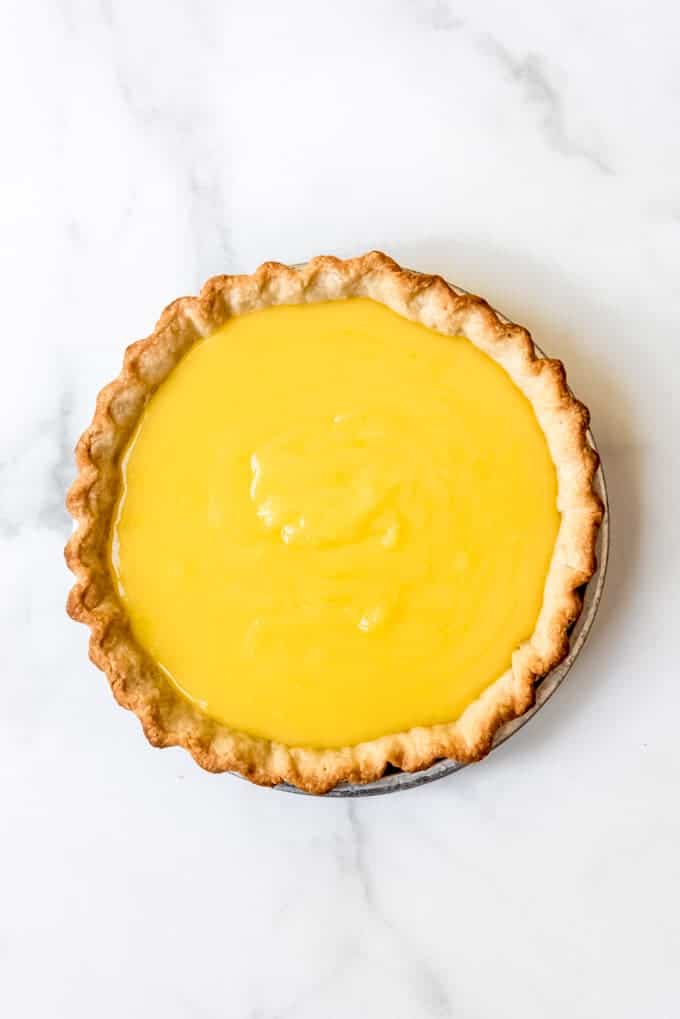
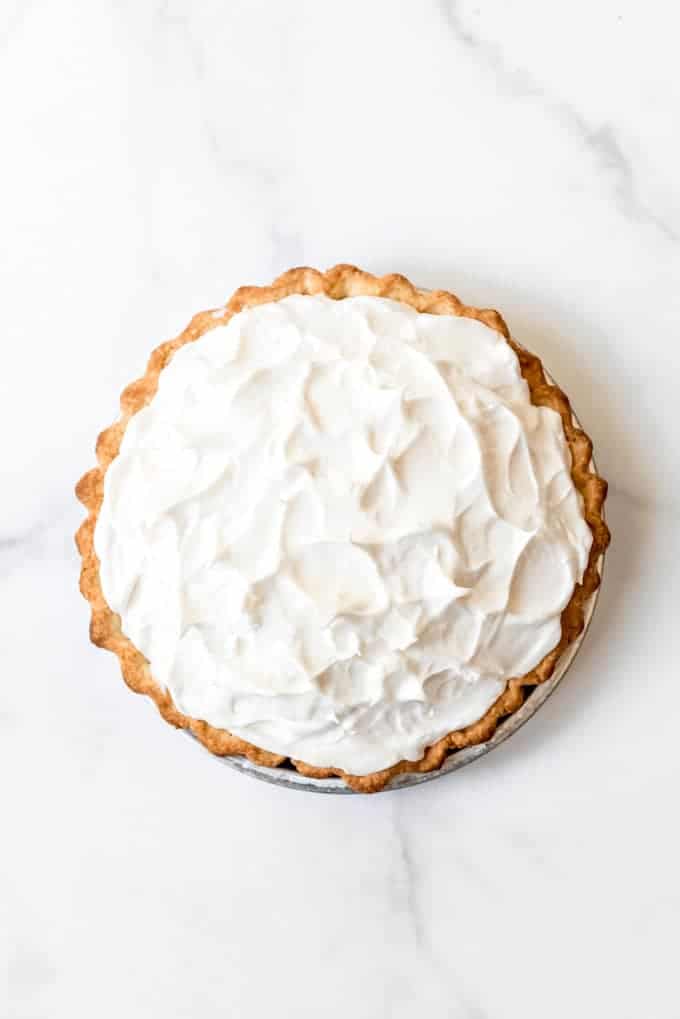
Make the billowy meringue
- To make the meringue, beat the egg whites and cream of tartar in a large bowl using a whisk attachment until foamy and soft peaks start to form. Gradually add the granulated sugar and continue beating on medium-high speed until stiff peaks form. A stiff peak is where you can lift the whisk attachment out of the bowl and the meringue holds its shape without melting back in on itself.
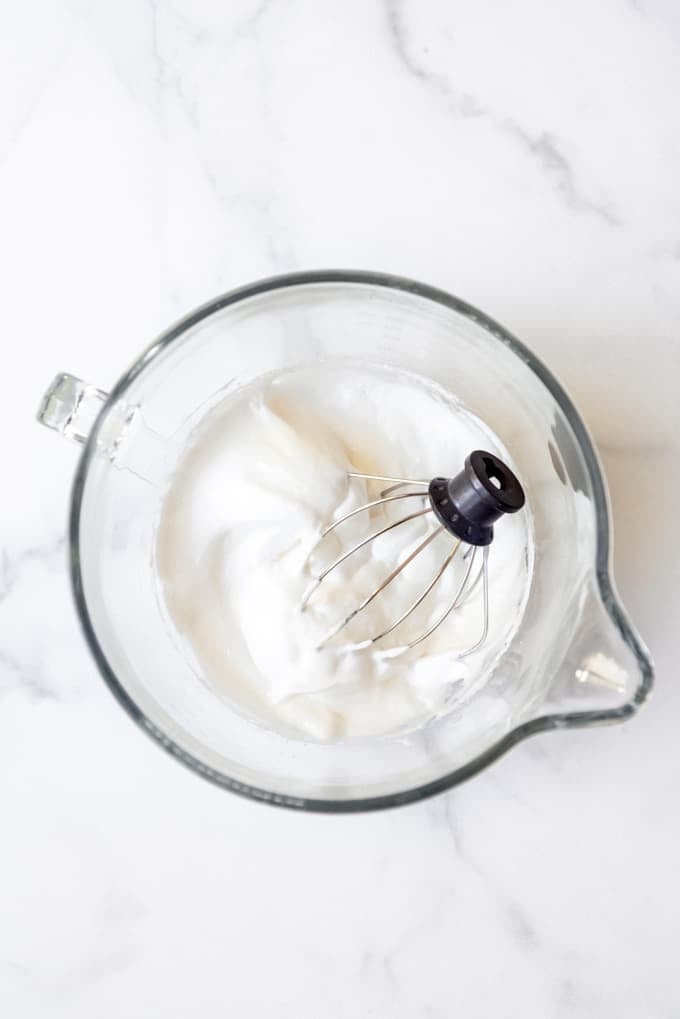
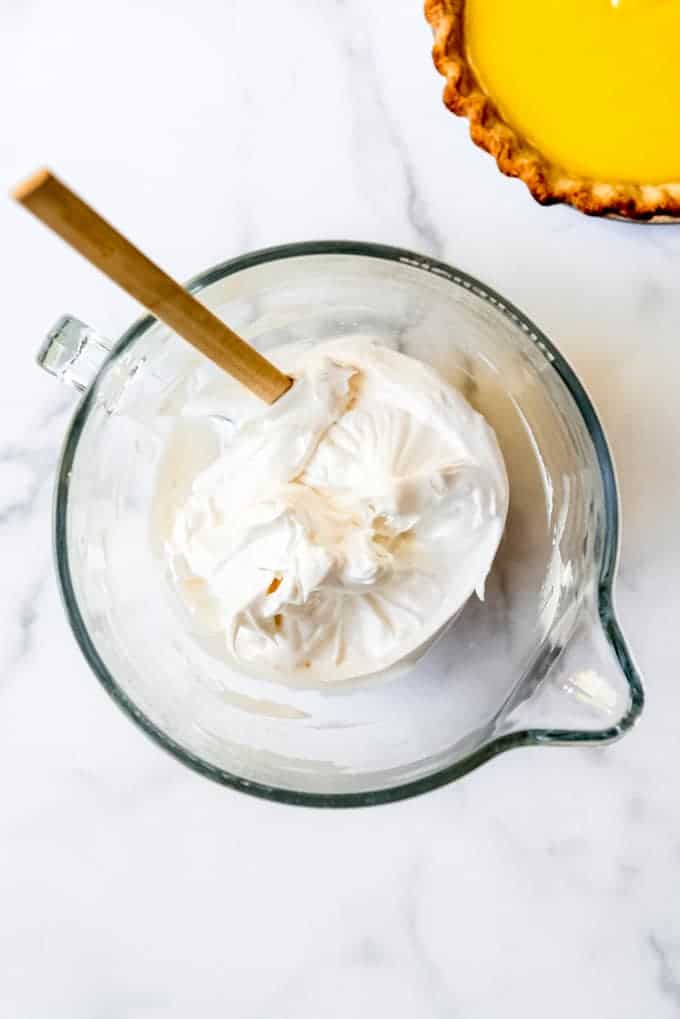
- Mound the light and fluffy meringue in the center of the hot filling. This helps cook the meringue from underneath and prevent meringue shrinkage and weeping. Use a rubber spatula or a knife to press it all the way into the edges, which helps seal it in place. I like to make decorative swirls and peaks in the meringue with the back of the spatula or knife.
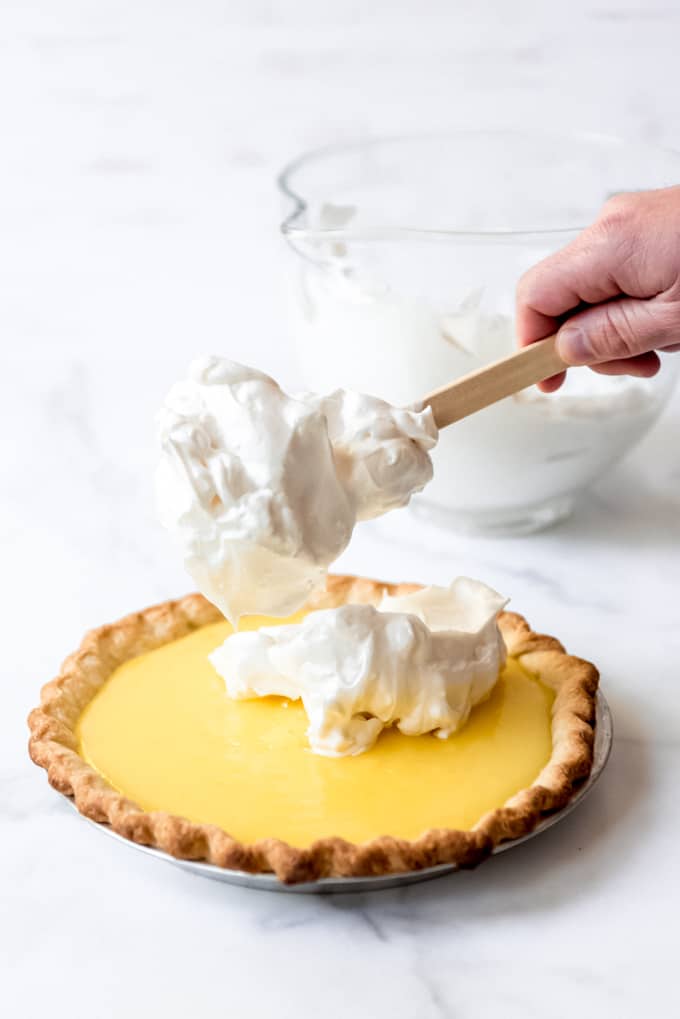
- Bake the pie in the oven for 10 to 15 minutes, just until the meringue is lightly browned on top. Watch so the meringue doesn’t burn! Remove from the oven and let cool for at least 2 hours so the pie can set up. Transfer the pie to the fridge and serve chilled or at room temperature. Leftover lemon meringue pie should be refrigerated and is best eaten within 2-3 days.

How to serve Homemade Lemon Meringue Pie
Let the lemon meringue pie to cool completely before slicing. This usually takes about 2 hours at room temperature. Cooling helps the filling set and prevents it from becoming too runny when sliced.
Use a sharp knife to slice the pie into individual servings. Wipe the knife clean between slices to ensure clean cuts, then carefully transfer each slice onto a serving plate using a pie server or spatula. Make sure to keep the meringue topping intact.
You can garnish each slice with a twist of lemon zest, a thin lemon slice or maybe some mint leaves to give the plate a little pop.
Lemon meringue pie can be served at room temperature or slightly chilled, depending on personal preference. Some people prefer it chilled, while others enjoy it at room temperature.
How to store this Recipe for Lemon Meringue Pie
Yes, lemon meringue pie should be kept in the refrigerator rather than sitting out all night. Cover it loosely with tented foil so as not to smash the meringue. I don’t recommend covering this pie with plastic wrap, as water tends to condense more with plastic wrap than with foil.
Homemade Lemon Meringue Pie Recipe FAQs
If you find your meringue often “weeps” there are a couple of things that could be causing this. In my experience, the most common problem is that I got impatient and adding the sugar too quickly so it didn’t dissolve all the way while I was making the meringue. Try adding just a tablespoon of sugar to the egg whites at a time, waiting about 20 seconds between each addition so that the sugar has a chance to completely dissolve.
My other best tips and tricks for a perfect meringue is to make sure to place it on the filling while the filling is still hot and really be sure to press that meringue against the edges of the pie crust so it can seal the filling beneath. If you leave gaps, the meringue doesn’t have anything to cling to and has a tendency to want to shrink in on itself.
Finally, if you are stilling having issues with weeping meringue, it could be that you live in a more humid climate, which I have heard can be the culprit in a lot of other desserts that involve beaten egg whites. Try making this pie on dry days rather than when it’s damp outside.
Blind baking involves pre-baking the pie crust before adding the filling until it is lightly golden brown which helps create a barrier between the crust and the filling, preventing moisture from seeping in.
Once the pie crust is baked and cooled, another option would be to brush the bottom and sides with a thin layer of beaten egg white to create a moisture barrier between the filling and the crust that helps keep the crust crisp, but that’s no something I have tried yet myself.
Also, be sure that the lemon filling is sufficiently thickened before pouring it into the pie crust. A thick filling is less likely to seep into the crust and make it soggy.
The other thing is to make sure that your lemon meringue pie is best served the same day it's made. If you need to store leftovers, cover the pie loosely with plastic wrap and store it in the refrigerator. However, be aware that the meringue topping may weep and soften over time, which can contribute to a slightly softer crust.
If your lemon meringue pie is not setting properly, several factors could be contributing to this issue. If the lemon filling is not cooked sufficiently, it may not set properly. Make sure that you cook the filling according to the recipe instructions until it thickens and reaches the desired consistency. The filling should coat the back of a spoon and have a pudding-like texture.
Also, use the right thickening agent and the correct amount. Our lemon meringue pie filling uses cornstarch as a thickening agent.
If the meringue layer is not properly cooked or if it's weeping (releasing liquid), it can contribute to the pie not setting. Ensure that the meringue is whipped to stiff peaks and that it completely covers the hot filling, with no gaps along the edges. Bake the meringue until it is golden brown and set.
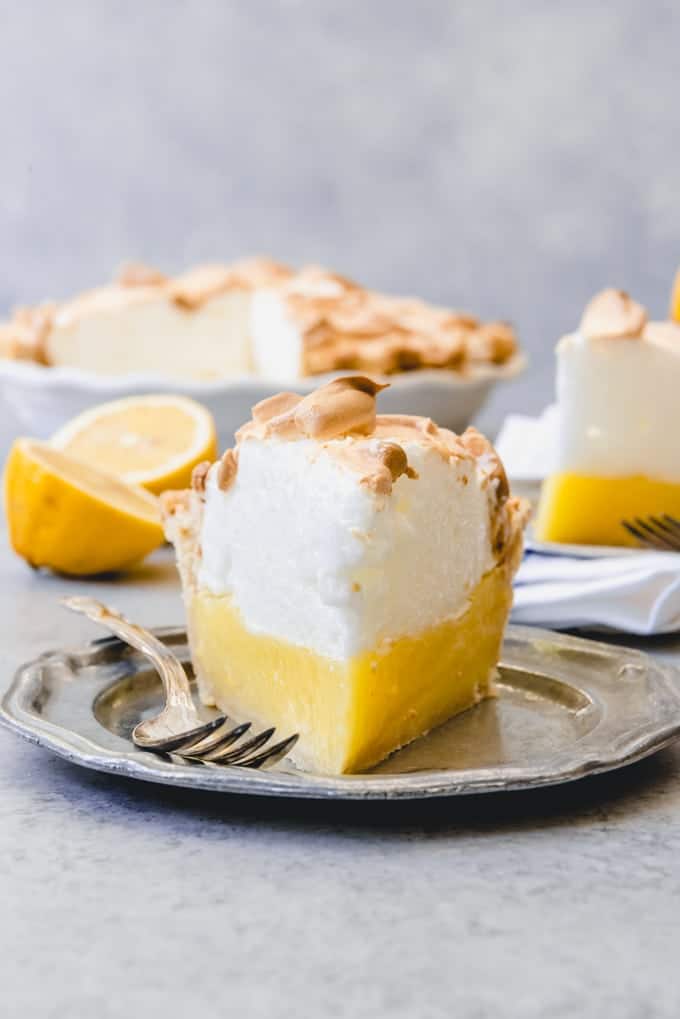
More like this Lemon Meringue Pie Recipe
- Lemon Buttercream Frosting
- Homemade Lemon Curd
- Lemon Icebox Cake
- Lemon Sugar Cookies
- Homemade Lemonade
- No-Bake Sour Cream Lemon Pie
- Lemon Cheesecake Bars
- Lemon Sorbet
Did you make this recipe?
Let me know what you thought with a comment and rating below. You can also take a picture and tag me on Instagram @houseofnasheats or share it on the Pinterest pin so I can see.
Best Recipe for Homemade Lemon Meringue Pie
Ingredients
- 1 9-inch [unbaked pie crust]
Filling
- 1 cup granulated sugar
- 4 Tablespoons cornstarch
- ¼ teaspoon salt
- 1 ½ cups water
- ½ cup fresh squeezed lemon juice
- 1 Tablespoon lemon zest, from 1 large lemon
- 2 Tablespoons salted butter
- 4 large egg yolks, beaten
Meringue
- 4 large egg whites, room temperature
- ¼ teaspoon cream of tartar
- ⅓ cup granulated sugar
Instructions
Pie crust
- Preheat oven to 400°F. Roll out pie crust on a floured surface and use it to line a 9-inch pie plate (affiliate link). Poke it several times with a fork. Line with parchment paper and fill with pie weights, dried beans, or rice.
- Bake for 15-18 minutes, just until the crust starts to brown slightly around the edges. Remove the pie weights and parchment paper from the pie crust and continue to bake for another 14-16 minutes until a light golden brown and cooked through. Cool completely.
- Reduce oven heat to 350°F.
Lemon Filling
- In a medium saucepan, whisk together the sugar, cornstarch, and salt. Add the water, lemon juice, and lemon zest and whisk again. Set over medium-high heat and cook, stirring frequently, until this mixture comes to a boil. Remove from the heat and stir in the butter until melted.
- Meanwhile, separate eggs and egg yolks into two bowls. In a medium bowl, whisk the egg yolks, then add ¼ cup of the hot lemon filling and whisk well to temper the yolks. Add another ¼ cup of the filling and whisk again, then return the egg mixture to the saucepan.
- Return the mixture back to the heat, reducing it slightly to medium heat. Cook and stir until the mixture comes back to a boil and thickens, about another 2-4 minutes. If the filling hasn't thickened, increase the heat slightly, and continue to cook a little longer. Pour into the prepared pie shell.
Meringue
- While the filling is still hot, make the meringue by beating the reserved egg whites and cream of tartar in a large bowl using a whisk attachment until foamy and soft peaks start to form. Gradually add the granulated sugar, a little at a time, and continue beating on medium-high speed until stiff peaks form.
- Mound the meringue in the center of the hot filling. Use a rubber spatula or a knife to press it all the way into the edges, sealing it in place.
- Bake for 10 to 15 minutes, just until the meringue is lightly browned on top. Watch so the meringue doesn't burn! Remove from the oven and let cool for at least 2 hours so the pie can set up before slicing.
- Transfer the pie to the fridge and serve chilled or at room temperature.
Notes
- This pie is best served fresh the day it is made, but leftovers will keep in the fridge for up to 3 days, covered in foil.
Nutrition
This recipe first appeared on Noshing with the Nolands where I am a contributor.
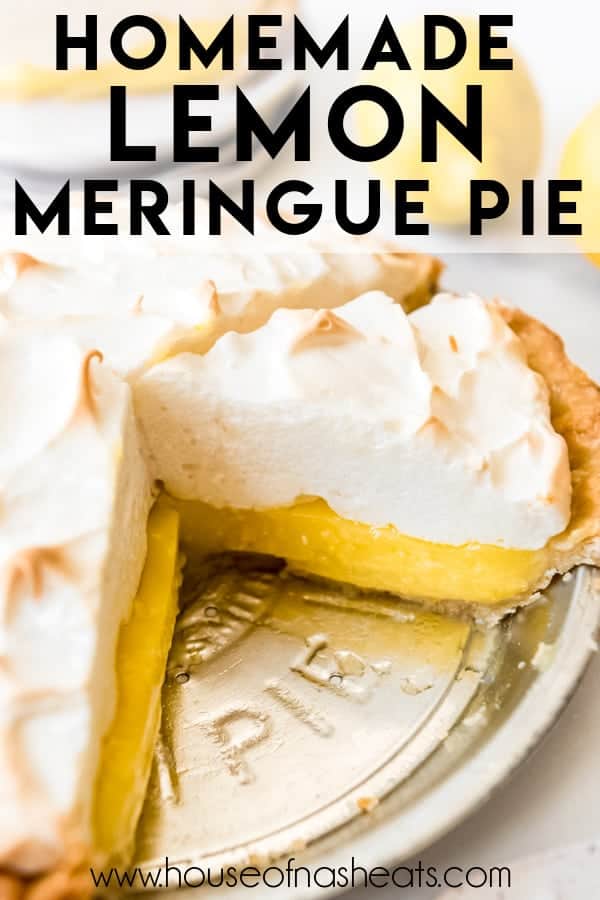
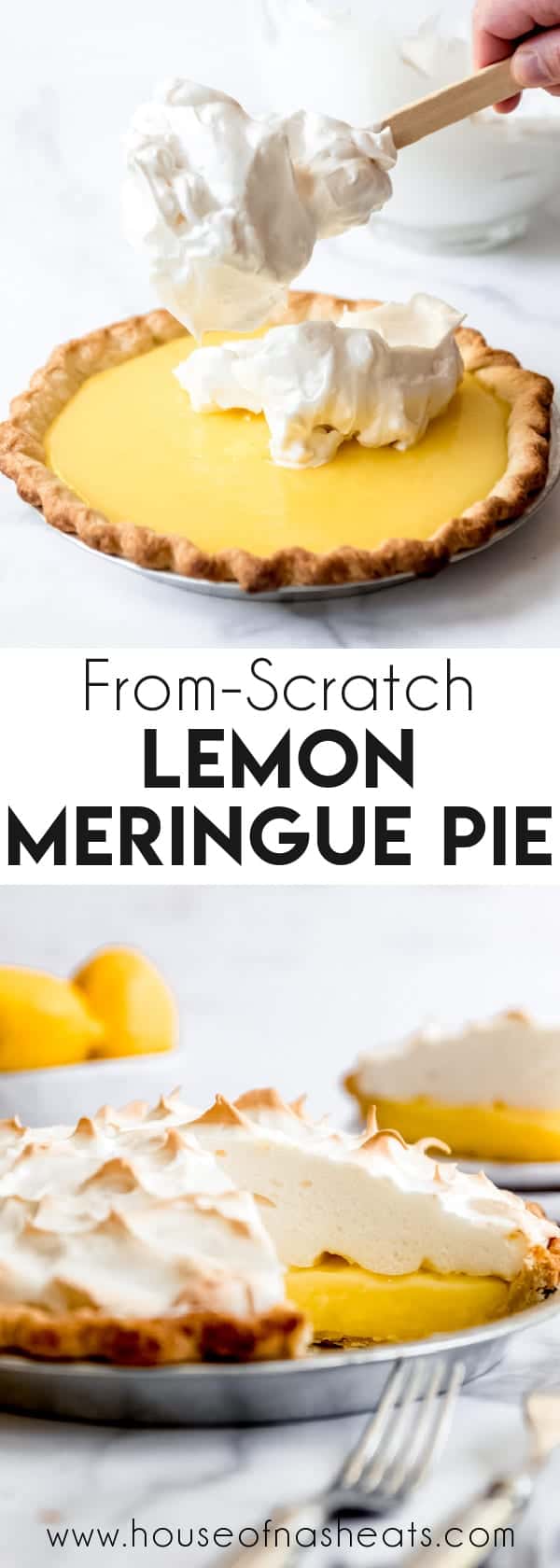
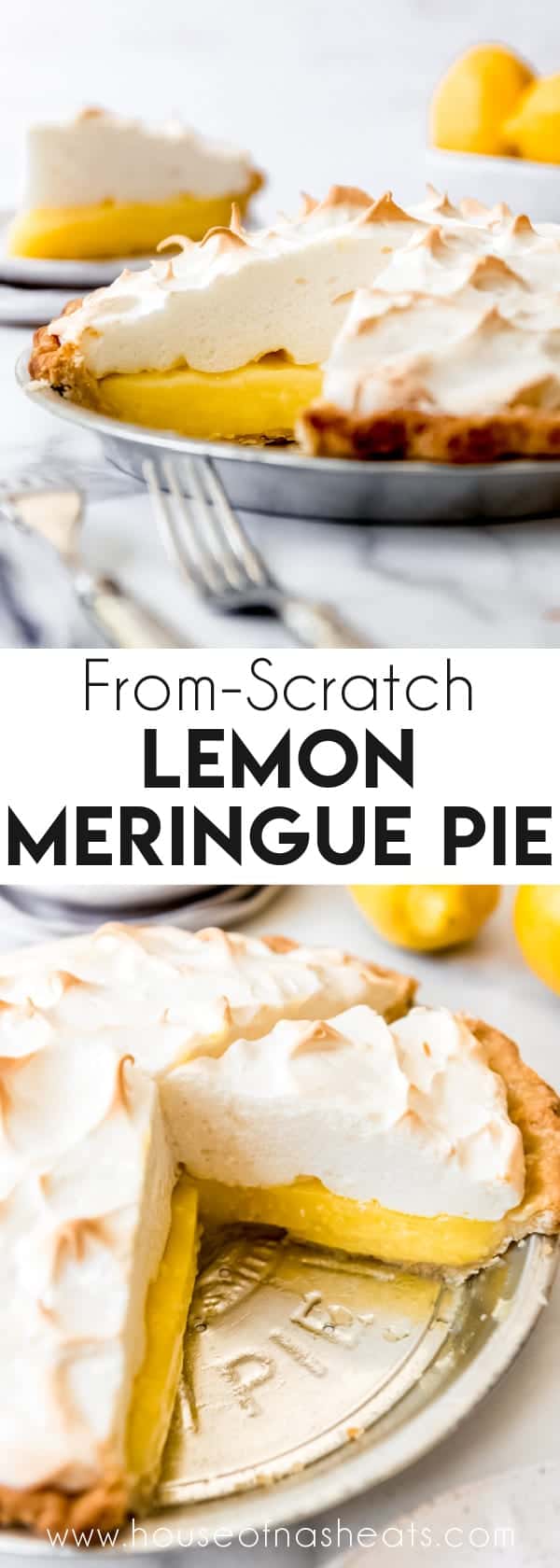
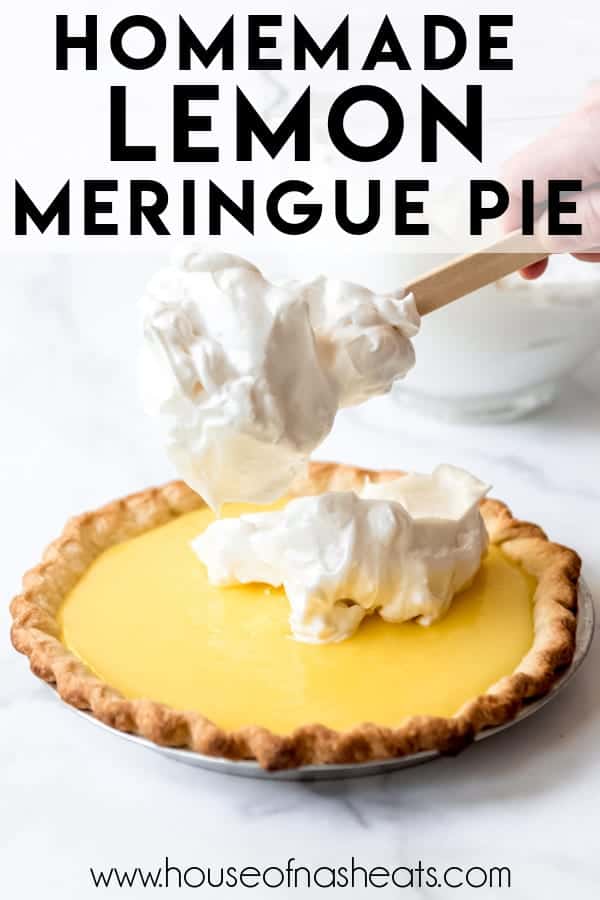

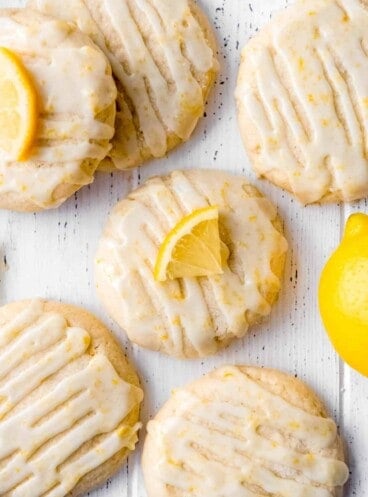
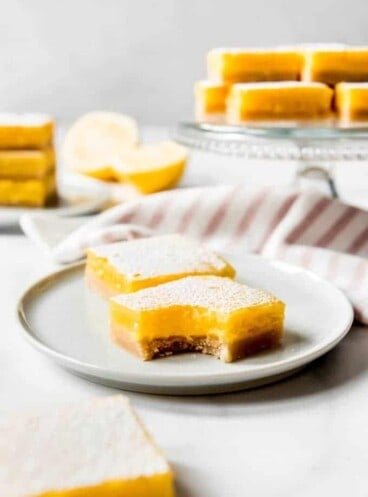

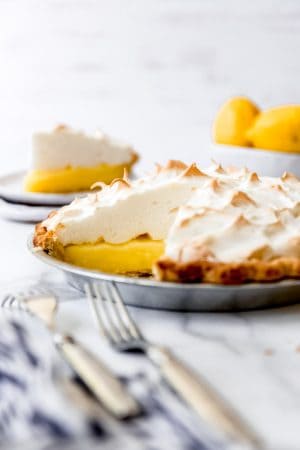

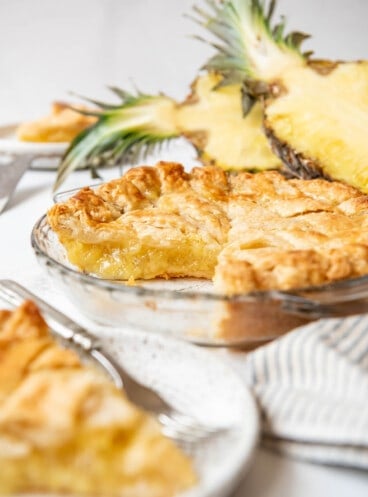
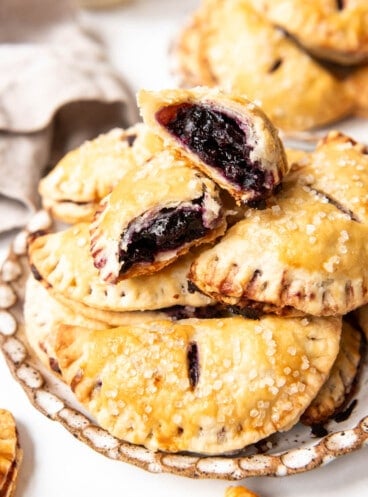


This looks amazing! Lemon Meringue is one of my absolute favorites!
I have never made a lemon meringue pie and need to remedy that after seeing your recipe!
This pie looks amazing! The meringue is perfect. Lemon desserts are one of my favorites.
Looks like the perfect lemon pie!
With 10-15 minutes of baking will the merengue be sabe to be eaten? Will the egg whites be fully cooked with this baking time?
I was wondering if you could substitute Lime, to make a lime pie instead of lemon?
That's a fantastic idea! Yes, I think you could!
The instructions that say to cook the crust for ~15 min with pie weights and then another ~15 until golden without the pie weights is not correct, at least for my oven and Pillsbury pie crusts. I've done two now, and both are way too brown to use. Hopefully, third time is the charm!
I'm sorry to hear that! I only use homemade crust, so it could be that the Pillsbury pie crusts are rolled thinner and should be baked for a shorter amount of time.
Thank you for sharing….. I’m making it for Christmas Dinner…..